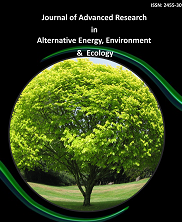Introduction: The Government of India initiated the Smart City Mission in 2015 with the aim of comprehensive urban development for 100 cities. Swachh Bharat Mission was also launched nationwide in 2014 with the goal of advancing universal sanitation coverage. Indore was selected as a Smart City; it was also declared the cleanest city in India in 2017 and in 2018 under Swachh Bharat. Indore is also participating in the United States Agency for International Development (USAID) – funded Building Healthy Cities Project, with the objective of improving the health of the city environment. As part of that objective, a closer examination of air pollution levels was conducted.
Methodology: Annual average concentrations for sulfur dioxide, nitrogen oxides, and particulate matter (PM2.5 and PM10) from three air pollution measuring stations located in Indore’s Polo Ground (industrial), Kothari Market (commercial), and Kanodia Road, Vijay Nagar (residential) were analyzed for trends during the last five years (2013-2017). For 2017, month-wise data were analyzed for seasonal variations.
Results: The annual average concentration of sulfur dioxide and nitrogen oxides did not change during the preceding five years. A declining trend was observed at all sites in the concentration of PM10 from a range of 118-187 μg/m3 in 2013 to 77-81 μg/m3 in 2017. The PM2.5 concentration was measured only since 2016; 2017 levels were less when compared to the preceding year. Lower values were observed during the rainy season (July to September) for all pollutants. It was observed that, during the period, the declining trend for PM10, various interventions were initiated in Indore, including night mechanical sweeping of city roads, free left loop roads to reduce traffic congestion, and an efficient systematic collection and disposal of solid waste.
Conclusion: Declining trends of air pollution in particulate matter in Indore is evident, possibly due to various measures taken by the Municipal Corporation and Indore Smart City Mission. Further analysis is needed to understand how these trends can be sustained and how they may impact the respiratory health of Indore citizens.


